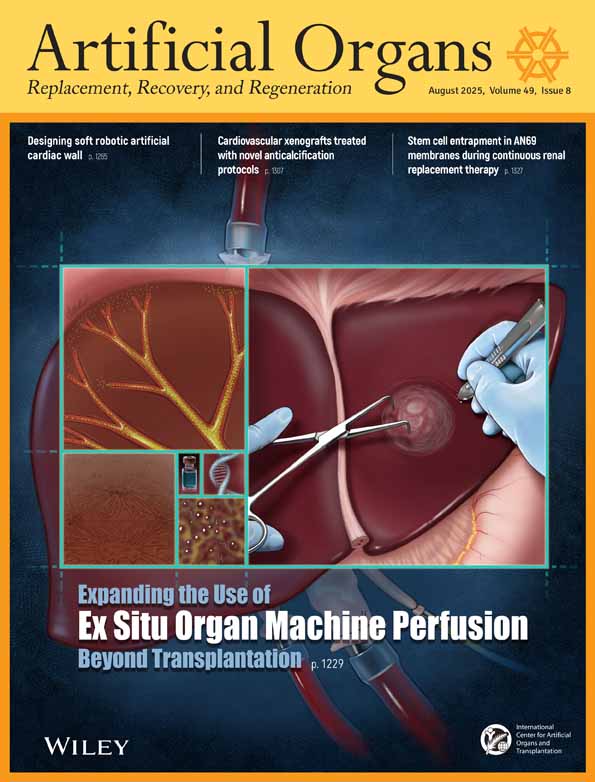Peripheral Vascular Resistances During Total Left Heart Bypass with an Oscillated Blood Flow
Presented in part at the 6th Congress of the International Society for Rotary Blood Pumps, July 25–27, 1998, in Park City, Utah, U.S.A.
Abstract
For development aimed at a totally implantable type ventricular assist device (VAD), the vibrating flow pump (VFP) has been developed at Tohoku University. A transcutaneous energy transmission system (TETS) using amorphous fibers was developed to power the totally implantable VAD system. The VFP works at a high frequency compared to that of a natural heart of a biological system. It is a frequency of 10–50 Hz. In this research, animal experiments with left heart bypass were carried out with healthy adult goats. For comparison between nonpulsatile flow and oscillated flow, a rotary pump (RP) and the VFP were used in the experiments. For the achievement of total left heart bypass, left ventricular approaches were carried out, and blood was pumped from the left ventricle to the descending aorta. Adequate support of the left heart was provided by both pumps. In terms of the results, the vascular resistances tended to decrease during the use of both pumps during 100% bypass driving. When we compared these pumps at the same flow rate, the resistances during RP driving were significantly smaller than those during VFP driving. These results may suggest that the influences of the VFP upon the peripheral vessels may be relatively small compared to those of the RP. This may be an important result when a stable hemodynamic condition is required during artificial circulation. The VFP was considered as a candidate for a totally implantable VAD as a result.




